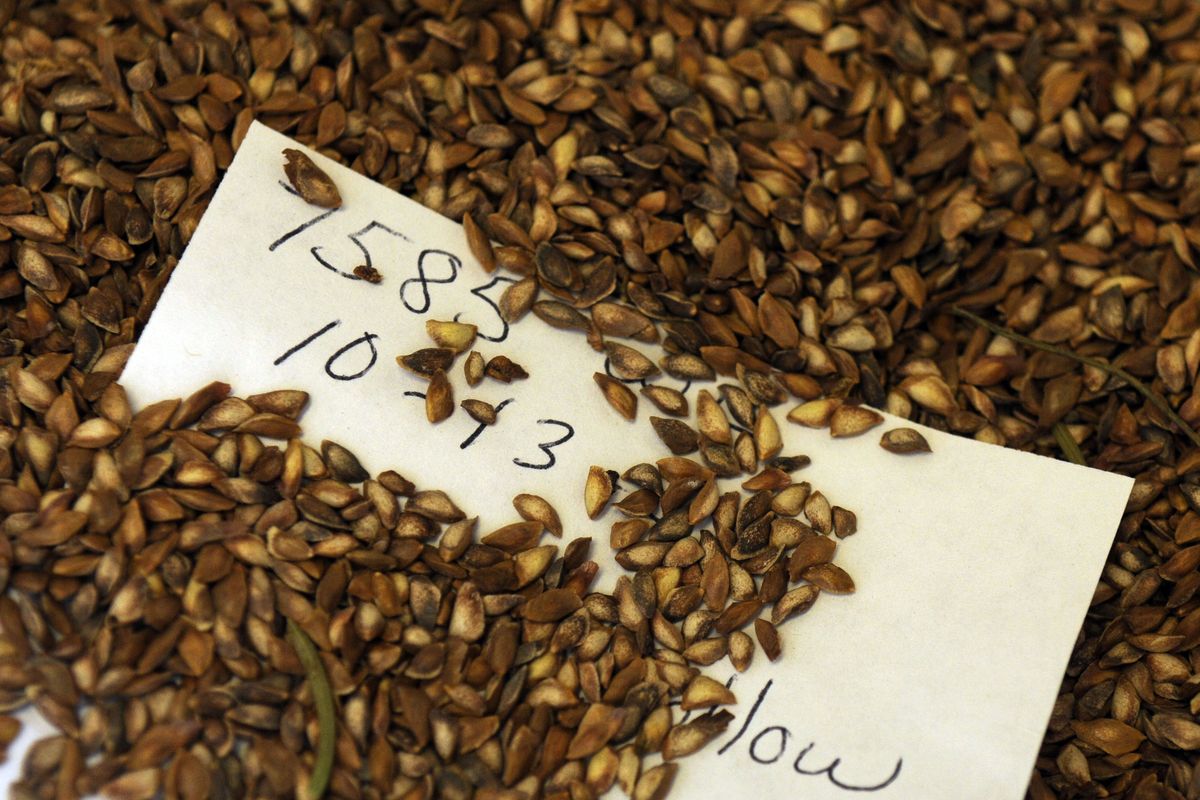CdA nursery grows saplings to order for Forest Service

Over a three-year period, wildfires charred 50,000 acres of the Custer National Forest in South Dakota. In some 1,000-acre tracts, not a single ponderosa pine tree remained to cast new seeds, and the seeds in the soil had burned up.
Natural regeneration “would have taken 100 or more years,” said Dennis Sandbak, the Custer forest’s silviculturist. To speed up the process, he ordered native pine, ash and alder seedlings from the U.S. Forest Service Nursery in Coeur d’Alene.
The nursery is a genetic storehouse for Western forests. One of six nurseries in the national forest system, it grows seedlings for federal agencies in Montana, central Oregon and parts of Idaho, Washington and South Dakota. The Coeur d’Alene nursery also supplies high-elevation tree seedlings for Utah and Wyoming.
Each national forest has crews collect pinecones, which are sent to the nursery for safekeeping. The nursery grows seedlings to order on a 220-acre tract of the Rathdrum Prairie.
“It’s kind of a complicated process,” said Melissa Jenkins, a silviculturist at the Flathead National Forest in Montana, which ordered 650,000 seedlings this year. “You can’t just go to a big-box nursery and buy a spruce tree from wherever and plant it on the Flathead. The trees are adapted to the area they grow in.”
Even the same species of spruce has different characteristics at different locations. Buds sprout later on trees that grow higher up the mountain, so they don’t get nipped by frost.
“They’re adapted differently,” Jenkins said. “It’s in the genetics that are in the seed.”
The nursery has $2 million worth of seeds stored in its freezers. Each national forest is required to keep a 10-year supply of seed on hand for replanting after timber harvests, fires and other work, such as watershed restoration. But catastrophic events can quickly wipe out a backlog. The Bitterroot National Forest used up its seed stock in a single year after fires burned more than 320,000 acres in 2000.
“We’re the keepers of the seed. They really own it,” said Aram Eramian, the nursery’s bare-root forester.
The forests pay about 20 cents to 36 cents for each bare-root seedling, which reflects the nursery’s costs to grow them. The operation is financially self-sufficient. It doesn’t receive federal appropriations.
The Coeur d’Alene nursery will celebrate its 50th anniversary next year. The site was chosen for its 160-day growing season and productive soils, replacing a Haugen, Mont., nursery that had a shorter growing season. From time to time, the open tract of land elicits calls from persistent developers, who think it would make a great subdivision.
But, “we’re here for the long haul,” Eramian said. “We have a mission and a purpose.”
Most of the trees grown at the nursery are familiar to anyone who’s strolled through the Northwest’s coniferous forests: ponderosa, lodgepole and western white pine; Douglas fir; western larch; and Engelmann spruce.
But a few rarer specimens also are thrown in. About 10 years ago, the nursery began working with Glacier and Yellowstone national parks to germinate whitebark pine seedlings. Whitebark pines are considered keystone species of alpine ecosystems. Their fat-laden seedlings are favorites of grizzly bears, squirrels and a jay-like bird called Clark’s nutcracker. Getting whitebark seeds to germinate is challenging. The seeds have to be nicked to grow, and they sprout in different years.
The nursery also fills special orders. Last year, it sent a shipment of 800,000 Jeffrey pine seedlings to a California forest. Jeffrey pines are Southwest cousins of ponderosas.
In the early 1990s, the nursery sold 12 million to 14 million seedlings a year. But as logging has declined on the national forests, annual seedling sales dropped to about 5 million.
To diversify its operations, the nursery started growing native shrubs, prairie grasses and wildflowers. With forest restoration a bigger focus, the customers were asking for other plants.
“If we have the seed,” Eramian said, “we can grow just about anything.”